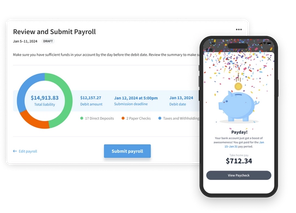
Eddy’s HR Mavericks Encyclopedia
The world's largest free encyclopedia of HR, with 700+ HR articles and podcasts.
Created by Eddy and our HR Mavericks community.
Employment Contract
An employment contract, more commonly referred to as an offer letter is a legally binding agreement which can be created verbally or in writing. During all stages of interaction with a candidate or employee, you may be verbally implying pieces of an employment contract. Continue reading to ensure your processes and actual employment contracts keep your company out of legal trouble.
What Is an Employment Contract?
An employment contract is an agreement that outlines the working relationship between a company and an employee, similar to an offer letter. Details should be included so that both parties understand their obligations and the terms of employment.
Written Versus Implied Employment Contracts
A written employment contract is an actual document that clearly defines the roles, responsibilities and benefits of the relationship between the employer and employee. An implied employment contract can arise out of various scenarios, such as discussions during the interview process that involve permanency of position or length of employment or even historical company actions like promotions, yearly appraisals, merit increases, etc.
Advantages and Disadvantages of Employment Contracts
Although it seems like employment contracts are an absolute advantage, there are some disadvantages that you should be aware of and take into consideration.
Employment Contract Advantages
Employment contracts can be advantageous by providing additional control over the employment relationship.
- Defined responsibilities and benefits. An employment contract should spell out the job responsibilities, pay and benefits to avoid any confusion later on.
- Legal coverage. An employee contract provides protection for all parties outlined in the agreement.
- Clarity of expectations. An employment contract provides visibility of the expectations of each party during the employment relationship.
Employment Contract Disadvantages
Because an employment contract is legally binding for both parties, problems can arise when changes need to be made regarding the employment relationship.
- Legally binding. There is exposure to risk if any parts of the agreement are broken.
- Lack of flexibility. If your contract outlines a specific duration of employment, termination could be a bit more difficult.
- Could be hard to make changes Once the employment contract is signed by both parties, any changes that need to be made will result in renegotiation and any subsequent changes would require signatures again by both parties, assuming both parties are willing to sign.
What To Include in Your Employment Contracts
This is your opportunity as the employer to outline the obligations and terms of employment so they can be clearly understood by both parties.
1. Compensation
List the hourly wages or salary and any commission or bonuses that have been agreed on.
2. Schedule
You can add the schedule the employee will be working, i.e. days and time of their shift.
3. Job Responsibilities
Here you can list out the various tasks and responsibilities that the employee will be expected to do.
4. Employment Duration
This can be a specific length of time or an ongoing period of time. It could also include a minimum duration with the possibility of extension.
5. Ownership of Employee’s Work Products
If your employee is responsible for content, communications and/or inventions, you may want to add a section outlining ownership.
6. Benefits
Lay out all agreed upon benefits in this section, such as medical, dental, vacation, 401K and other perks.
7. Confidentiality
You can include nondisclosure language here and have a separate nondisclosure agreement as well.
How To Write an Employment Contract
Here are some steps you can take to guide you as you write an employment contract. Once you draft it, you’ll want to have it reviewed by a legal professional.
1. Name it
Make sure when you send for a signature, the receiving party knows exactly what it is. For example, label it: (Company Name) Employment Contract
2. Name the Parties
Identify who will be entering into the contract. Clearly spell out the name of the employer and employee.
3. Compensation Details
Provide as much detail as possible surrounding the agreed upon compensation. Be sure to list out items such as hourly wages, salary, commission structure and schedule, bonus plans, etc. You can also choose to list details such as overtime calculation, paid holidays and how paychecks are delivered (i.e. direct deposit).
4. Terms and Conditions
There may be minimum terms and conditions or labor laws set by your respective federal and state governments that will need to be outlined in your employment contract. This might include items such as working hours and severance details. You may also include information regarding benefits, sick pay, dress code, attendance policy, etc.
5. Job Responsibilities
Outline the expectations of the job. You will not need to cover every responsibility or task that the employee will be doing, but you can do a general bulleted list or even break the responsibilities into percentages.
Topics

Malea Booker
Malea Booker is a progressive HR leader who loves playing in the gray, finding outside the box solutions to help organizations solve problems utilizing their greatest asset - their people. Malea has over 15 years of broad HR experience but finds talent optimization on the top of her - "Favorite HR things" to-do list. Malea believes that strong HR departments are the foundation upon which the most successful companies are built.
Frequently asked questions
Other Related Terms
Eddy’s HR Mavericks Encyclopedia
Employment Contract
An employment contract, more commonly referred to as an offer letter is a legally binding agreement which can be created verbally or in writing. During all stages of interaction with a candidate or employee, you may be verbally implying pieces of an employment contract. Continue reading to ensure your processes and actual employment contracts keep your company out of legal trouble.
What Is an Employment Contract?
An employment contract is an agreement that outlines the working relationship between a company and an employee, similar to an offer letter. Details should be included so that both parties understand their obligations and the terms of employment.
Written Versus Implied Employment Contracts
A written employment contract is an actual document that clearly defines the roles, responsibilities and benefits of the relationship between the employer and employee. An implied employment contract can arise out of various scenarios, such as discussions during the interview process that involve permanency of position or length of employment or even historical company actions like promotions, yearly appraisals, merit increases, etc.
Advantages and Disadvantages of Employment Contracts
Although it seems like employment contracts are an absolute advantage, there are some disadvantages that you should be aware of and take into consideration.
Employment Contract Advantages
Employment contracts can be advantageous by providing additional control over the employment relationship.
- Defined responsibilities and benefits. An employment contract should spell out the job responsibilities, pay and benefits to avoid any confusion later on.
- Legal coverage. An employee contract provides protection for all parties outlined in the agreement.
- Clarity of expectations. An employment contract provides visibility of the expectations of each party during the employment relationship.
Employment Contract Disadvantages
Because an employment contract is legally binding for both parties, problems can arise when changes need to be made regarding the employment relationship.
- Legally binding. There is exposure to risk if any parts of the agreement are broken.
- Lack of flexibility. If your contract outlines a specific duration of employment, termination could be a bit more difficult.
- Could be hard to make changes Once the employment contract is signed by both parties, any changes that need to be made will result in renegotiation and any subsequent changes would require signatures again by both parties, assuming both parties are willing to sign.
What To Include in Your Employment Contracts
This is your opportunity as the employer to outline the obligations and terms of employment so they can be clearly understood by both parties.
1. Compensation
List the hourly wages or salary and any commission or bonuses that have been agreed on.
2. Schedule
You can add the schedule the employee will be working, i.e. days and time of their shift.
3. Job Responsibilities
Here you can list out the various tasks and responsibilities that the employee will be expected to do.
4. Employment Duration
This can be a specific length of time or an ongoing period of time. It could also include a minimum duration with the possibility of extension.
5. Ownership of Employee’s Work Products
If your employee is responsible for content, communications and/or inventions, you may want to add a section outlining ownership.
6. Benefits
Lay out all agreed upon benefits in this section, such as medical, dental, vacation, 401K and other perks.
7. Confidentiality
You can include nondisclosure language here and have a separate nondisclosure agreement as well.
How To Write an Employment Contract
Here are some steps you can take to guide you as you write an employment contract. Once you draft it, you’ll want to have it reviewed by a legal professional.
1. Name it
Make sure when you send for a signature, the receiving party knows exactly what it is. For example, label it: (Company Name) Employment Contract
2. Name the Parties
Identify who will be entering into the contract. Clearly spell out the name of the employer and employee.
3. Compensation Details
Provide as much detail as possible surrounding the agreed upon compensation. Be sure to list out items such as hourly wages, salary, commission structure and schedule, bonus plans, etc. You can also choose to list details such as overtime calculation, paid holidays and how paychecks are delivered (i.e. direct deposit).
4. Terms and Conditions
There may be minimum terms and conditions or labor laws set by your respective federal and state governments that will need to be outlined in your employment contract. This might include items such as working hours and severance details. You may also include information regarding benefits, sick pay, dress code, attendance policy, etc.
5. Job Responsibilities
Outline the expectations of the job. You will not need to cover every responsibility or task that the employee will be doing, but you can do a general bulleted list or even break the responsibilities into percentages.
Topics

Malea Booker
Malea Booker is a progressive HR leader who loves playing in the gray, finding outside the box solutions to help organizations solve problems utilizing their greatest asset - their people. Malea has over 15 years of broad HR experience but finds talent optimization on the top of her - "Favorite HR things" to-do list. Malea believes that strong HR departments are the foundation upon which the most successful companies are built.
Frequently asked questions
Other Related Terms
Eddy's HR Newsletter
Sign up for our email newsletter for helpful HR advice and ideas.


